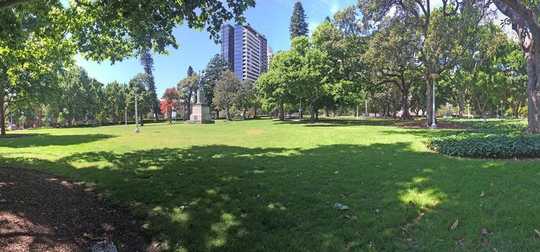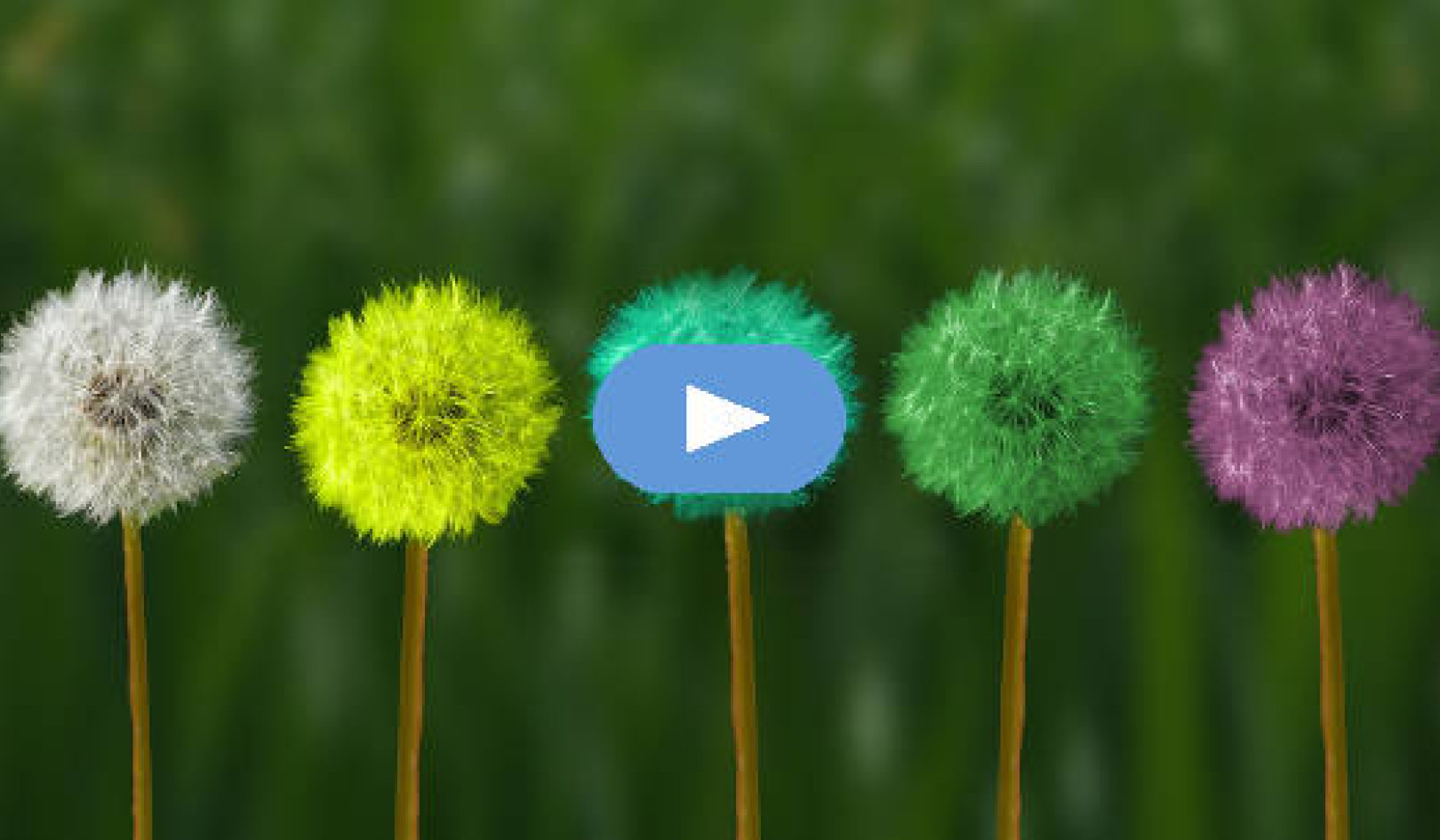
A park, in this case Hyde Park in Sydney, is one of the easiest and most accessible ways to engage with nature in the city. Lucy Taylor, Author provided
The sky is blue and you are walking through a park, speaking with a colleague, discussing a new project. You feel energised, puffing slightly as your pace speeds up with the excitement of tossing around ideas as you walk among the trees.
This is how the Nature Conservancy envisages you may spend an hour of your working week this week. April 18-24 is Work with Nature Week, a campaign to encourage Australians to engage with the natural environment. The hope is that you will come to appreciate nature – if you don’t already – and support conservation efforts.
Nature, according to the campaign, can improve your concentration and make you a sharper and more creative thinker. What boss wouldn’t want their employees to “work with nature”?
The health and ecology research literature brims with examples of the positive effects of nature on well-being. Exposure to nature helps us recover from stress and mental fatigue and restores concentration. Lower blood pressure, improved concentration and more positive emotions are identified when people go for a walk in a natural environment compared with an urban environment.
Attention Restoration Theory (ART) explains that restoration requires a different experience – such as “getting away” – in an environment that is together interesting, non-threatening and realistic. If you have spent your morning in a meeting room or office, a park with trees and perhaps a pond or fountain is about as different as you can get.
Finding nature in the heart of the city
If you work in the middle of the city, how practical is it to spend an hour of your working week surrounded by roads and concrete, pollution and the occasional rat? Even if you can go and sit among the pigeons for an hour, how “natural” is that experience of nature?
 Not just for the birds: a surprising amount of biodiversity, including both introduced species and native wildlife, can be found in urban parks. Lucy Taylor, Author provided
Not just for the birds: a surprising amount of biodiversity, including both introduced species and native wildlife, can be found in urban parks. Lucy Taylor, Author provided
Urban ecologists have realigned thinking about nature in cities. Cities are novel environments that have the potential to support surprising amounts of nature. Parks, surrounding national parks, street trees and even private gardens create a large-scale urban forest that wildlife can use.
For example, in Sydney vulnerable Powerful Owls have been sighted in the Royal Botanic Gardens in the middle of the city. Australian cities have even been found to act as hotspots for threatened species.
Conserving any local native areas and species is important to maintain the unique natural identity of a city. In addition, manicured parks and gardens provide new kinds of plants with the potential to support both local and native species. Nature is dispersed through our cities, even if we don’t notice it.
What supports well-being in cities?
We have published research that identified the aspects of urban environments that support human well-being. Being able to move safely around a city (walkable space) and enabling space for social interaction are known factors of good urban design. Green space is another factor that, for the reasons discussed above, is important to ensure we can survive in cities.
We add biodiversity and ecosystem services to the equation as both are necessary if we are also to thrive in cities. Without sufficient biodiversity, the nature we encounter may not be realistic enough for a successful restorative experience, according to ART. Biodiversity can also keep species in check – for example, reducing the numbers of animal vectors of disease such as mosquitos and ticks.
Ecosystem services are critical to our survival. More than the air we breathe and the water we drink, when ecosystems fail, this has serious consequences for human well-being. Environmental degradation has been found to affect people who work in rural environments, but cities are already degraded landscapes. Urban nature has never been more important.
If you are considering how to spend an hour working in nature this week but your calendar is hectic and you are facing a wall of meetings, don’t despair. You could even benefit from nature just by glancing at it. In a recent Australian study, a glance at a green roof has been found to be more restorative than a glance at a concrete roof.
Working with nature is not limited to sitting in a lush garden with your laptop. A walking meeting through a landscaped area, which would provide the added benefits of exercise, or even a glance at a natural view might help you to recover from your day’s stress.
The Work with Nature campaign has another function: to remind decision-makers that we need nature in our cities. There are many forms it might take. An atrium or view from your office has the potential to help you function more effectively at work, but a large inner-city park offers us the realistic green space that provides the full benefits of nature.![]()
About The Authors
Lucy Taylor, Doctoral Candidate in Urban Ecology, University of Sydney and Dieter Hochuli, Associate Professor, School of Biological Sciences, University of Sydney
This article is republished from The Conversation under a Creative Commons license. Read the original article.
Related Books:
The Body Keeps the Score: Brain Mind and Body in the Healing of Trauma
by Bessel van der Kolk
This book explores the connections between trauma and physical and mental health, offering insights and strategies for healing and recovery.
Click for more info or to order
Breath: The New Science of a Lost Art
by James Nestor
This book explores the science and practice of breathing, offering insights and techniques for improving physical and mental health.
Click for more info or to order
The Plant Paradox: The Hidden Dangers in "Healthy" Foods That Cause Disease and Weight Gain
by Steven R. Gundry
This book explores the links between diet, health, and disease, offering insights and strategies for improving overall health and wellness.
Click for more info or to order
The Immunity Code: The New Paradigm for Real Health and Radical Anti-Aging
by Joel Greene
This book offers a new perspective on health and immunity, drawing on principles of epigenetics and offering insights and strategies for optimizing health and aging.
Click for more info or to order
The Complete Guide to Fasting: Heal Your Body Through Intermittent, Alternate-Day, and Extended Fasting
by Dr. Jason Fung and Jimmy Moore
This book explores the science and practice of fasting offering insights and strategies for improving overall health and wellness.























